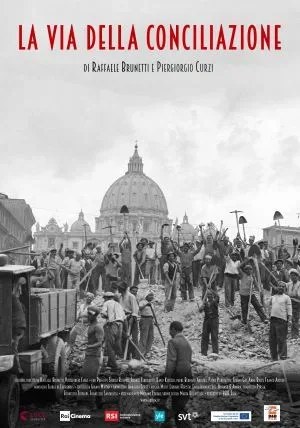
Director Piergiorgio Curzi, Raffaele Brunetti
Country, yearITA, 2016
Technical specs colore
Production B&B Film, Yuzu Production, Rai Cinema, Istituto Luce Cinecitta'
Release date 2017-03-30
Cinecittà rights International rights sales, Domestic rights sales, Co-production
Documentary
Via della Conciliazione
Everyone can visualize Via della Conciliazione with St Peter’s Basilica in the background. This image is Rome’s most famous postcard, the backdrop against which TV news correspondents report on the Vatican, the Pope or the city. Few realize that this street has not always been there, and that in fact it should not be there. The truth is that Michelangelo, who designed and built the dome of St Peter’s, and Bernini, the colonnade’s architect, had envisaged a surprise effect on pilgrims emerging onto St Peter’s Square from the labyrinthine streets of the adjacent neighborhood. Successive Popes had, over the centuries, toyed with the idea of building a triumphal route into the Vatican to welcome crowds of pilgrims and send the world a powerfully symbolic image of the power of the Church, but they never succeeded in realizing this ambition. Paradoxically, the situation only changed when Mussolini, an overtly anticlerical atheist at the start of his career, realized that if he wanted power in Italy he would have to get the Catholic Church on his side. The Duce focused on a treaty between the Italy and the Holy See. This treaty is still in force today and regulates Church-State relations. It led to the Church receiving substantial financial support and acquiring its leading role in the religious and civic lives of the Italian people, greatly undermining the power of the secular state. The pact led to the birth of the Vatican City, the smallest but not the least powerful state in the world. The price paid by Mussolini and Italy to reconcile Church and State also needed a tangible manifestation. To sanction the accord, Pope Pius XI obtained Mussolini’s promise to demolish the densely built-up area extending out from in front of the colonnade of St Peter’s Square. On 29 October 1936, Benito Mussolini, with a swing of his pickax, officially inaugurated the demolition work. In less than a year, the area had been razed to the ground. So began construction of the great new artery in the center of Rome, Via della Conciliazione, commemorating the reconciliation between the Italian State and the Holy See. Today, Via della Conciliazione is firmly part of the city’s fabric, familiar to Romans, tourists and the Catholic faithful from across the world. But to a very few it is still an open wound, a place of painful memories. This film relates the story of an architectural project which had enormous impact on the history, religion and lives of the people of Rome, using exclusive access to archive material and direct accounts by the last living eyewitnesses.
 Film search
Film search